At Pete’s Pet Supply, we understand how important it is to provide your feline friend with the best possible care. One essential item for any cat owner is a cat scratcher, and with so many types available, it can be overwhelming to choose the right one. In this article, we’ll delve into the various types of cat scratchers, the materials they are made from, the importance of these scratchers, and how to choose the best one for your cat.
What is Cat Scratcher?
Cat scratchers are more than just a fun accessory for your feline friends; they are essential for their overall well-being. Cats have an innate need to scratch, which serves multiple purposes such as marking territory, maintaining their nails, and relieving stress. Providing your cat with the right scratcher can significantly enhance their quality of life and save your furniture from potential damage.
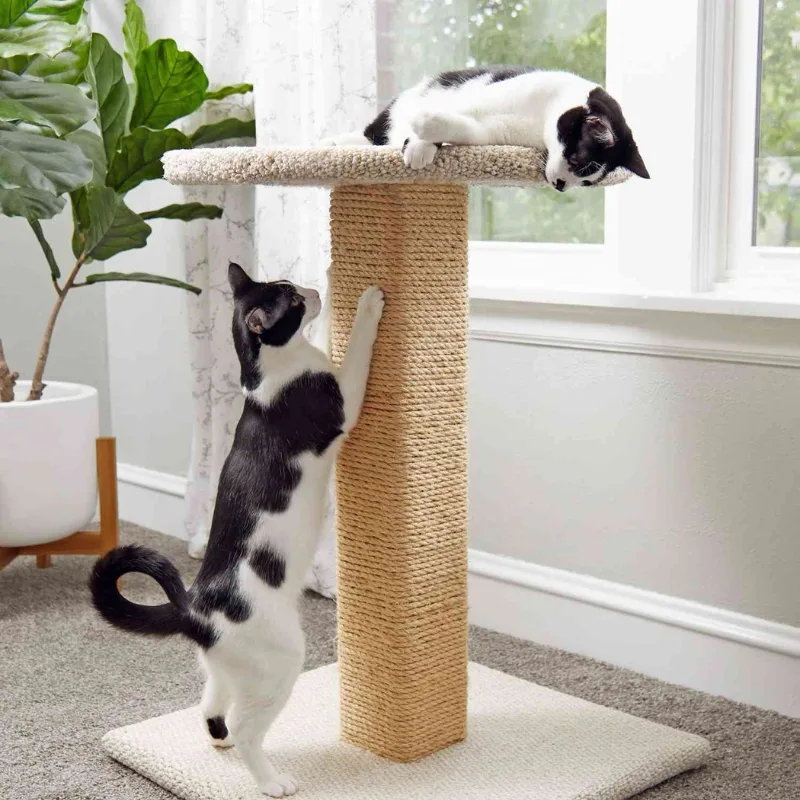
Types of Cat Scratcher Designs
Vertical Scratchers
Vertical scratchers stand upright and allow cats to stretch fully while scratching. They are ideal for cats that prefer to scratch in a vertical position, reaching up high and scratching their way down. These scratchers can be simple posts or intricate designs that provide more interaction opportunities.
Horizontal Scratchers
Horizontal scratchers lie flat on the floor, catering to cats that enjoy scratching low surfaces. They resemble doormats or small flat pads, allowing cats to lie down or stretch out comfortably while scratching away. These are perfect for cats that prefer to scratch carpet or flooring.
Incline Scratchers
Incline scratchers offer a slanted surface that combines the benefits of both vertical and horizontal scratchers. They make it easy for cats to find a comfortable angle to scratch at, which can be particularly beneficial for elderly or less agile cats.
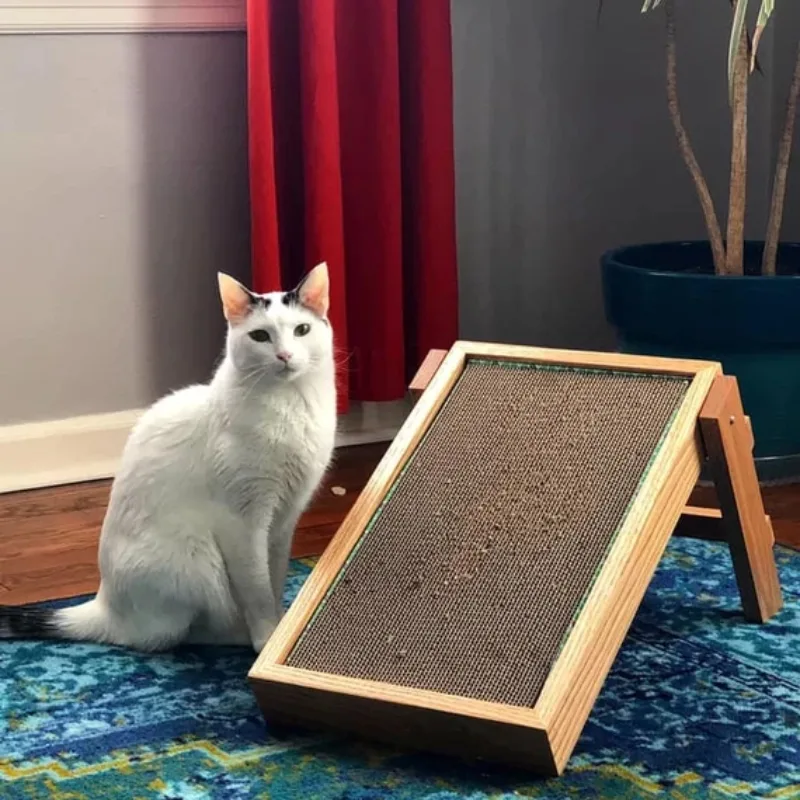
Scratching Posts
Scratching posts are one of the most common and versatile types of scratchers. They range in size and complexity, from simple posts to elaborate structures with multiple levels and play features. Posts typically encourage vertical scratching and can be made from various materials to suit different preferences.
Scratching Pads and Mats
Scratching pads and mats are simple, compact, and usually portable options. These can be made from different materials, offering a versatile and budget-friendly solution that can be easily replaced when worn out.
Wall-Mounted Scratchers
Wall-mounted scratchers save space and can be an ideal solution for smaller homes. Mounted on walls, they provide vertical scratching surfaces and can be placed at the height your cat prefers. These scratchers are also great for protecting walls from damage.
Materials Used in Cat Scratchers
To ensure a satisfying scratching experience, a cat scratcher is often made from various materials, each catering to the unique preferences of our feline friends. Here’s a detailed look at some common options:
Cardboard
Cardboard cat scratchers are economical and widely favored by many cats. These scratchers come in various shapes and sizes, offering a softer yet gratifying scratch. While they are affordable and easily replaceable, their lifespan is typically shorter as they wear out quickly with frequent use. Despite this, many cats find the texture of cardboard irresistible, making it a staple in many households.
Sisal Rope and Fabric
Sisal is a durable natural fiber that cats love due to its rough texture. These are extensively used in cat scratcher designs, particularly in scratching posts and pads, providing a satisfying scratch surface that lasts longer. This material is highly appealing to cats and stands up well to frequent use, making it a popular choice among cat owners.
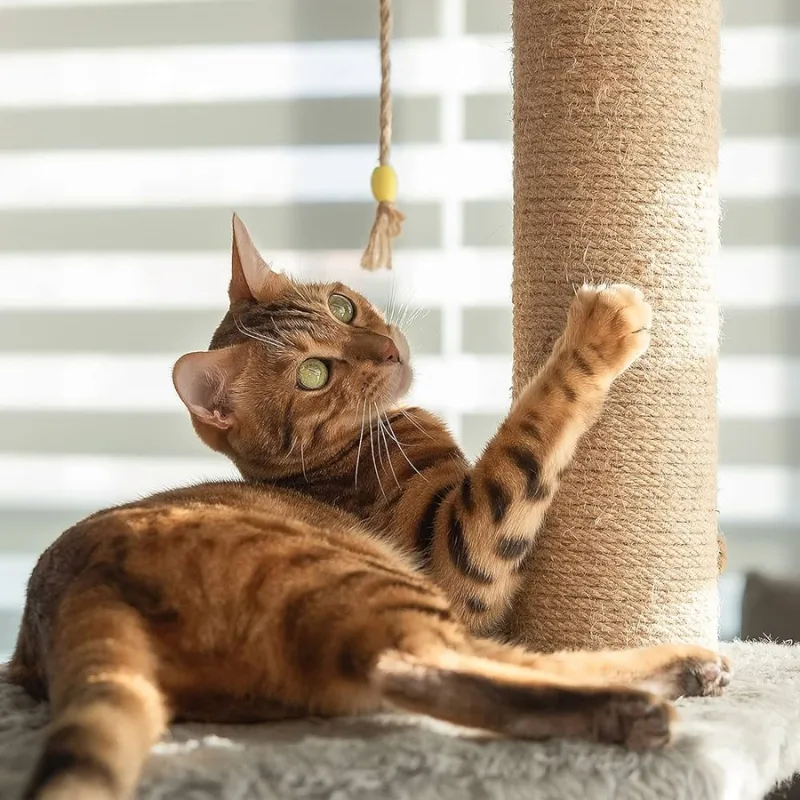
Carpet is commonly used in cat scratcher designs, such as scratching posts and pads. It is durable and provides a texture that many cats enjoy. However, using carpet as a material for a cat scratcher can sometimes inadvertently encourage cats to scratch household carpeting as well. It’s important to balance this with training and providing alternative scratching options.
Wood
Some cat scratchers use untreated wood, offering a natural texture that can be particularly intriguing for some cats. Wooden cat scratchers are often more durable and can also enhance the aesthetic appeal of your home decor. The natural feel of the wood can be a great hit with cats who enjoy a more authentic scratching surface.
Choosing the right cat scratcher material can greatly enhance your cat’s scratching experience, promoting healthier claws and providing a source of mental stimulation. By selecting a material that suits your cat’s natural preferences, you can ensure that they remain engaged and satisfied, protecting both their well-being and your furniture.
Importance of a Cat Scratcher
Regular scratching helps cats maintain their nails by removing outer dead layers, preventing overgrowth and related issues. Additionally scratching provides vital physical exercise, helping to tone and stretch muscles, particularly in the shoulders and back.
Scratching is a natural stress reliever for cats. It allows them to expel energy and reduce anxiety, providing a mental health boost. Cats use scratching to mark their territory. Glands in their paws release scents that are left behind, signaling ownership and providing a sense of security.
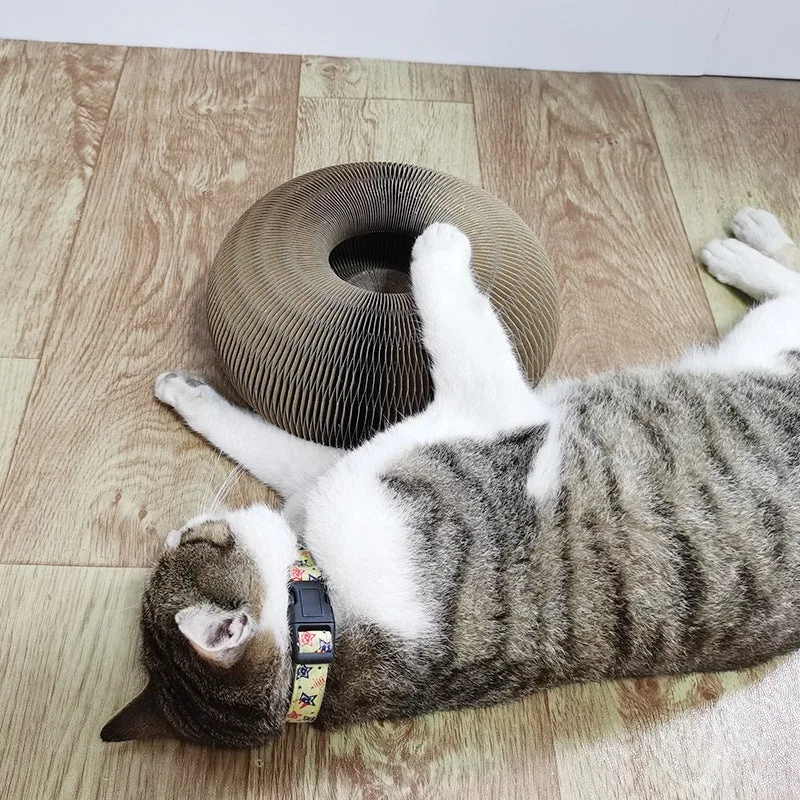
Choosing the Right Cat Scratcher
When selecting a cat scratcher, start by assessing your cat’s preferences. Observing their scratching habits can guide you in choosing the right type; some cats prefer vertical surfaces, while others are more inclined to use horizontal ones. Space requirements are another critical factor to consider. If your living space is limited, a wall-mounted or compact scratcher might be the most suitable option. Durability and construction quality should also be top of mind; investing in a high-quality scratcher ensures it lasts longer, providing a more satisfying experience for your cat and saving money over time.
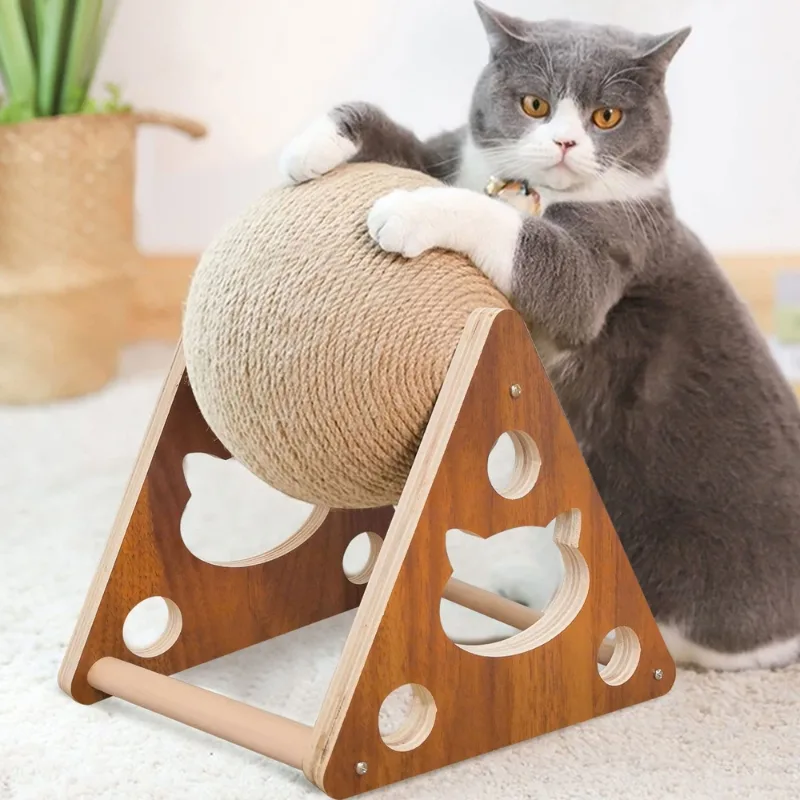
Aesthetic considerations and home decor compatibility are important as well. Cat scratchers come in various designs and colors, and choosing one that complements your home decor can transform it into a stylish addition rather than an eyesore. Lastly, take your budget into account. There are durable scratchers available at various price points, so balancing cost and quality is essential for making a smart purchase that meets both your needs and your cat’s.
Maintenance and Care of Cat Scratchers
- Cleaning and Sanitizing: Regular cleaning is necessary to keep scratchers hygienic. Some materials, like sisal and wood, can be wiped down, while others, like carpet and cardboard, may need deeper cleaning or replacement.
- Repairing and Replacing Parts: Over time, parts of the scratcher may wear out. Repairing or replacing these parts can extend the life of the scratcher.
- Monitoring for Wear and Tear: Regularly inspect scratchers for signs of wear. Timely maintenance ensures they remain safe and effective for your cat.
Providing your cat with the right scratcher is crucial for their physical and mental health. From vertical and horizontal options to multi-functional cat trees, there’s a perfect scratcher for every feline. Understanding the materials and importance of scratchers can help you make an informed choice that both you and your cat will love. At Pete’s Pet Supply, we recommend considering your cat’s preferences, space, and budget when choosing a scratcher. With proper care and maintenance, a good scratcher can provide years of joy and well-being for your furry friend.
Javier Cortes – Founder of Pete’s Pet Supply store since 1993. Has a lot of experience in the animal and pet industry. From professional knowledge of the industry and experience in caring for, buying and selling food, toys and equipment for pets. Javier Cortes often shares this knowledge on forums and the store’s website.
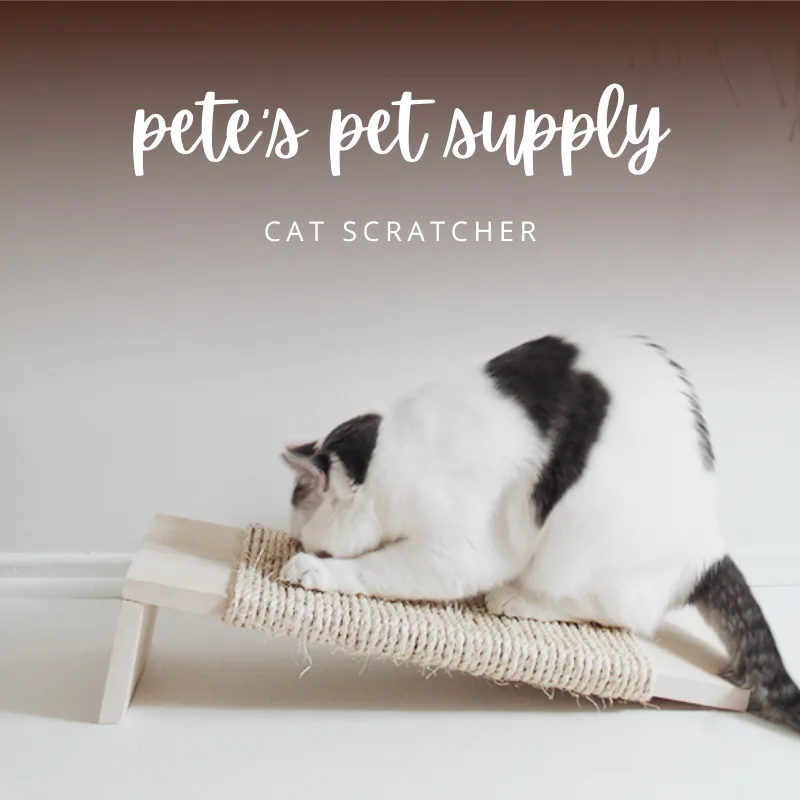
Leave a Reply